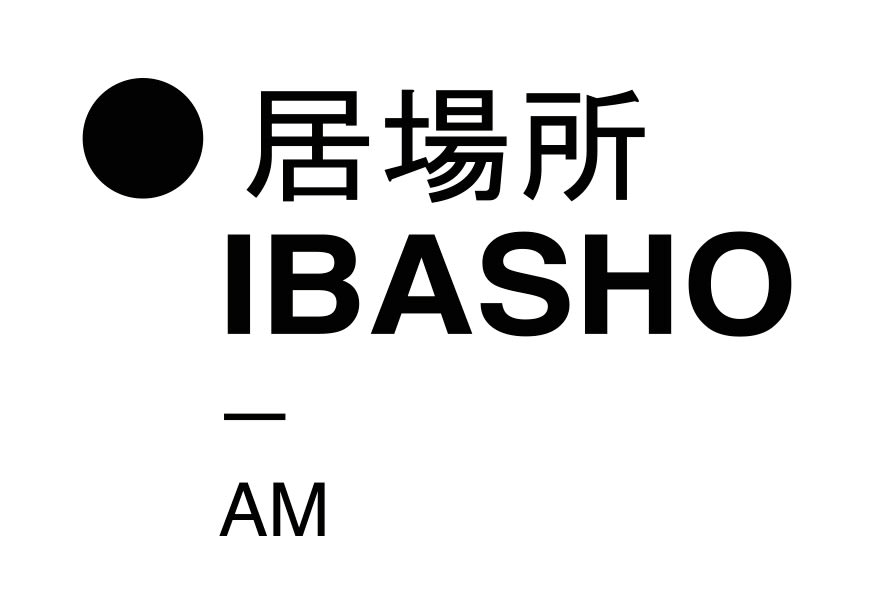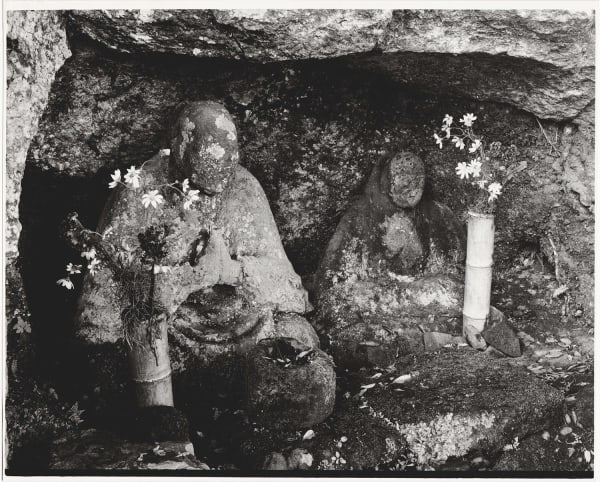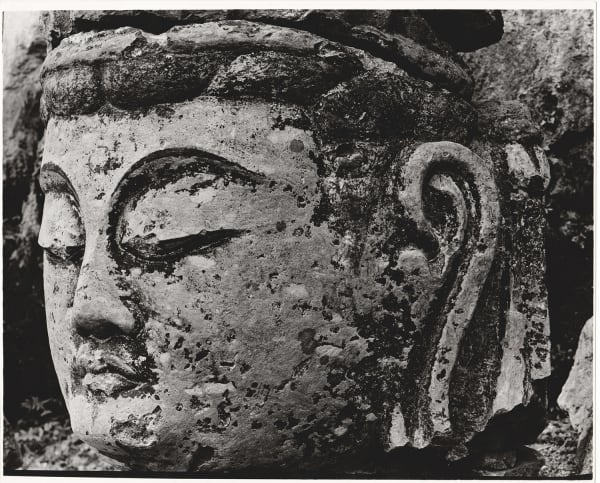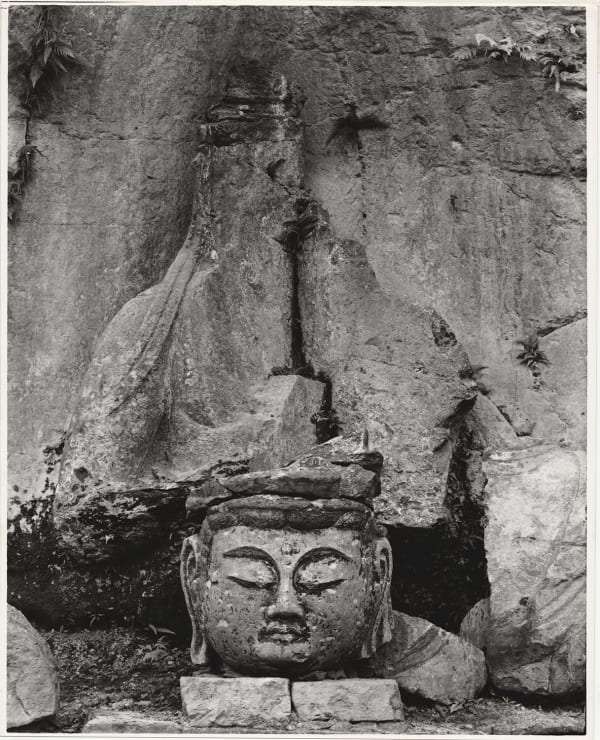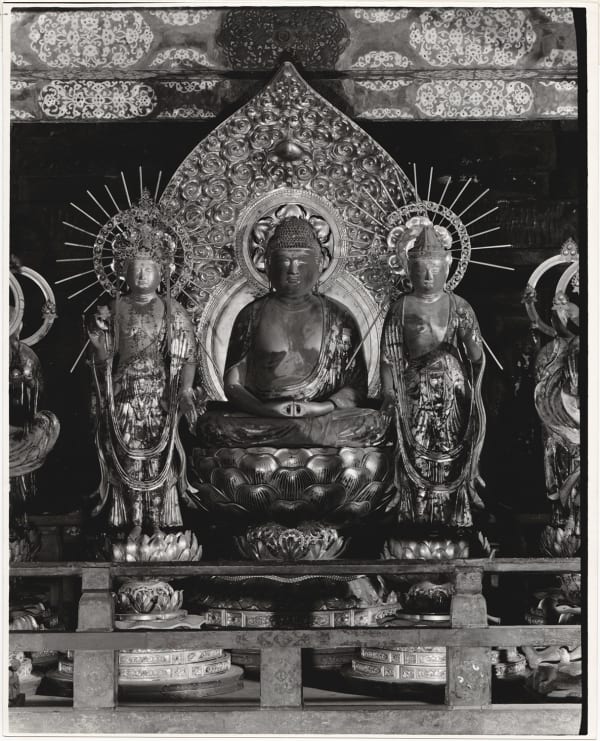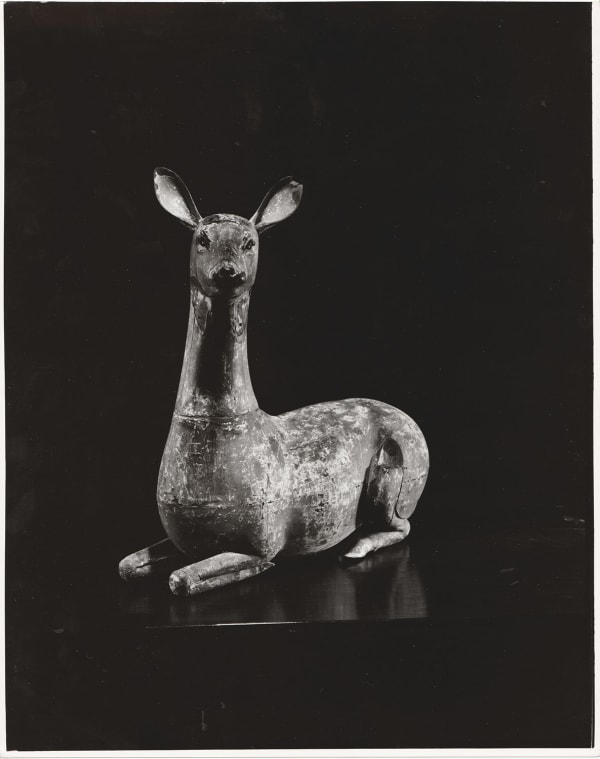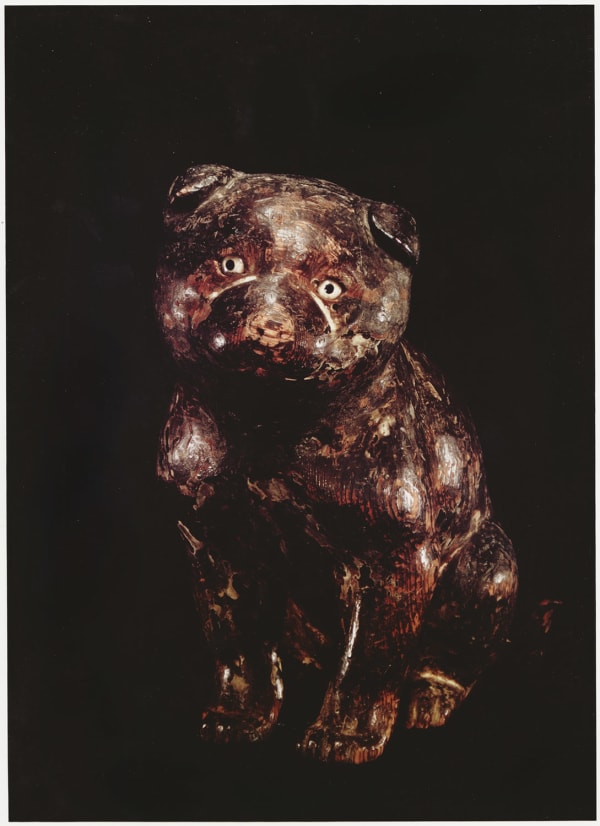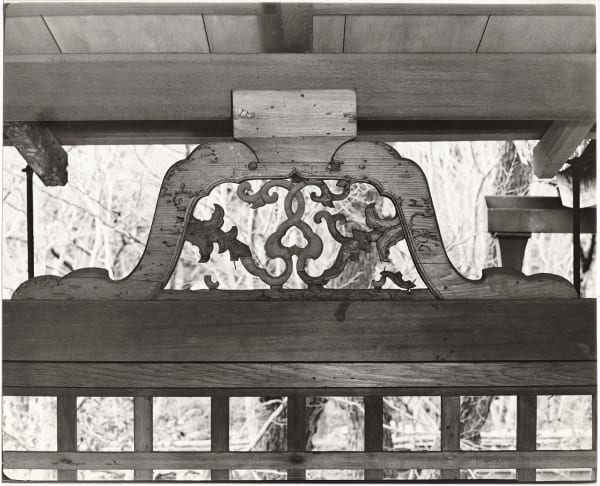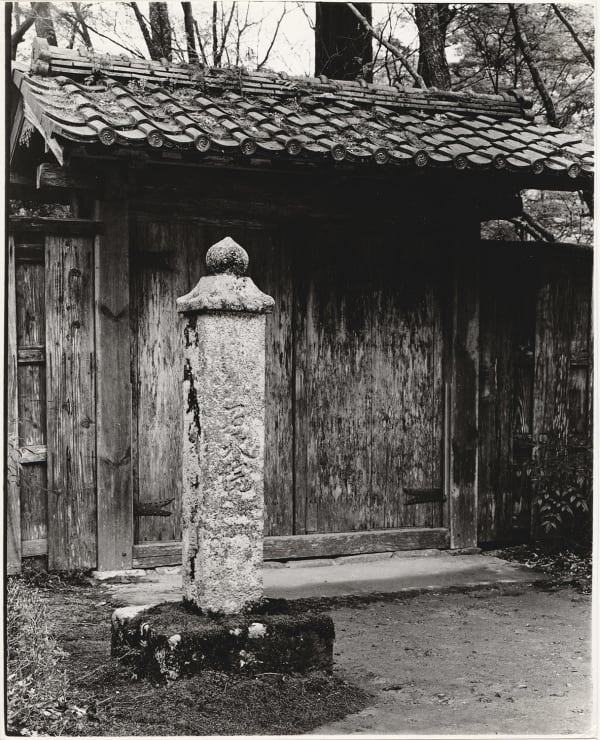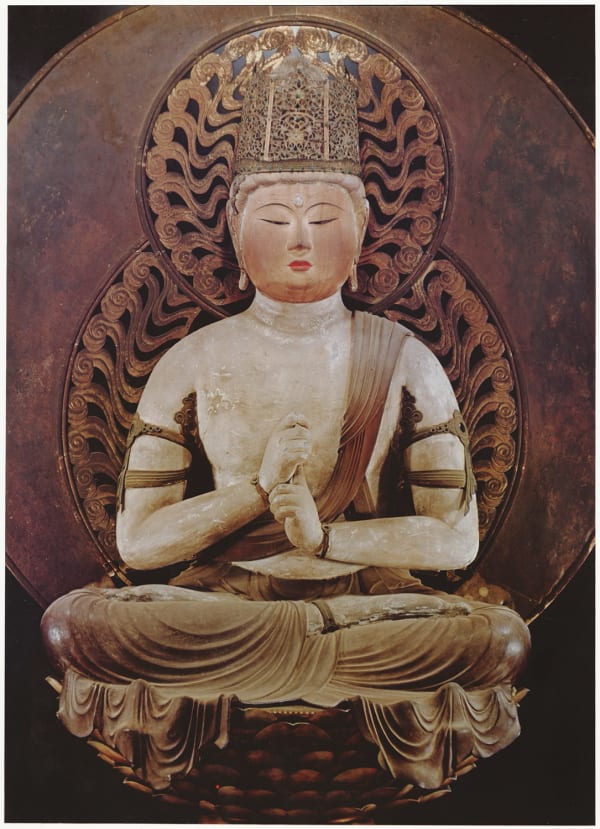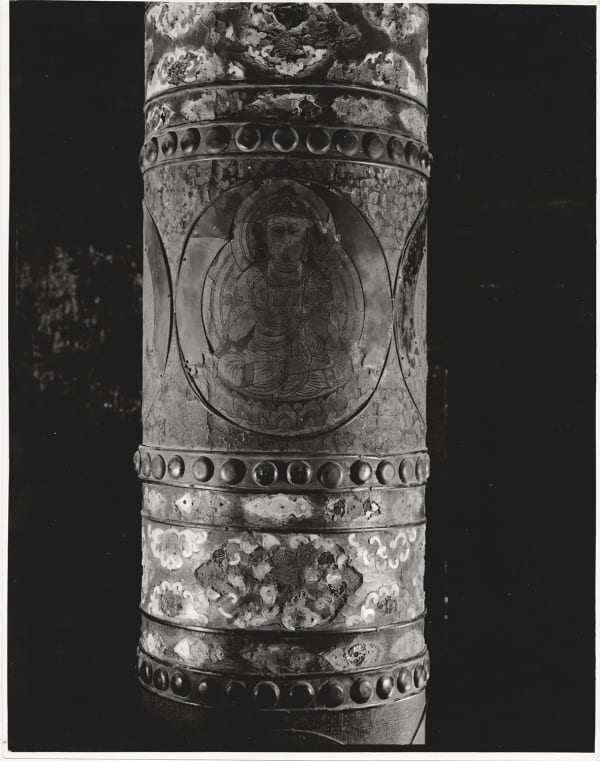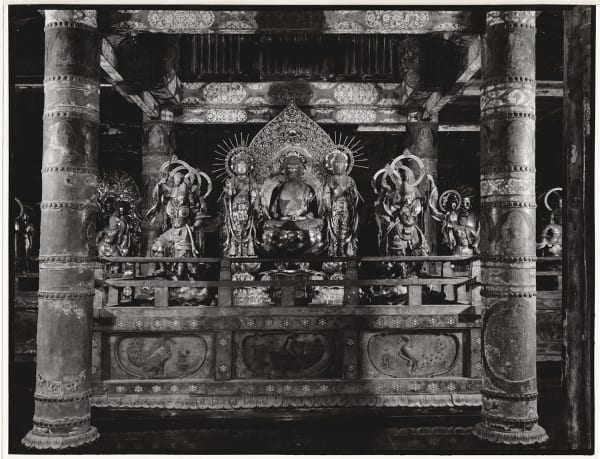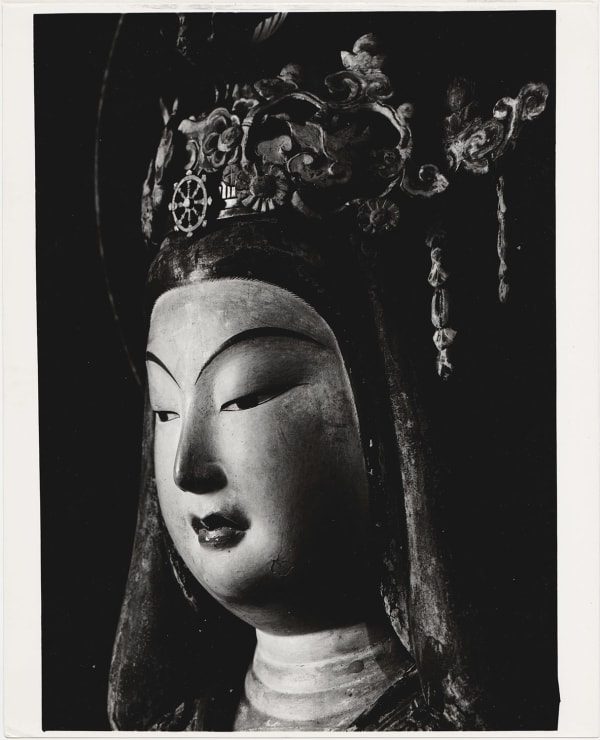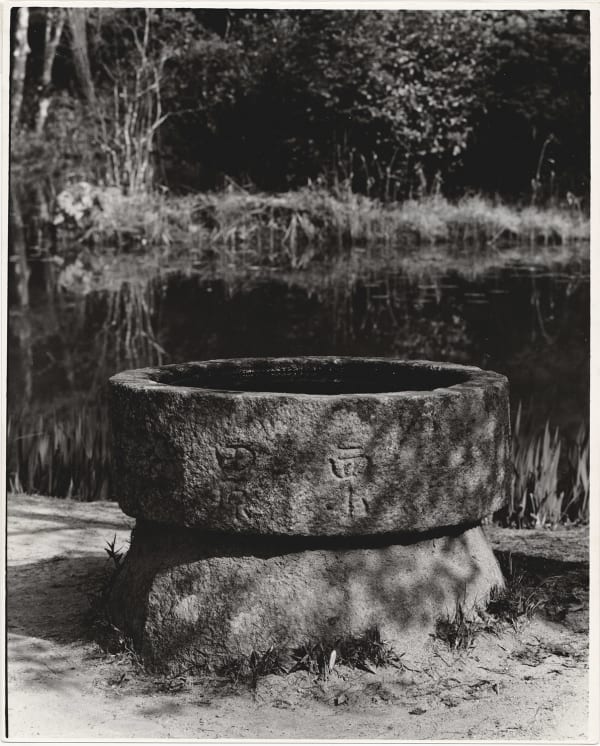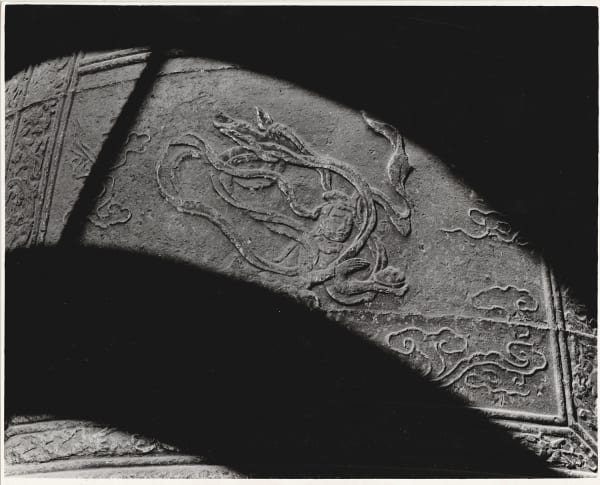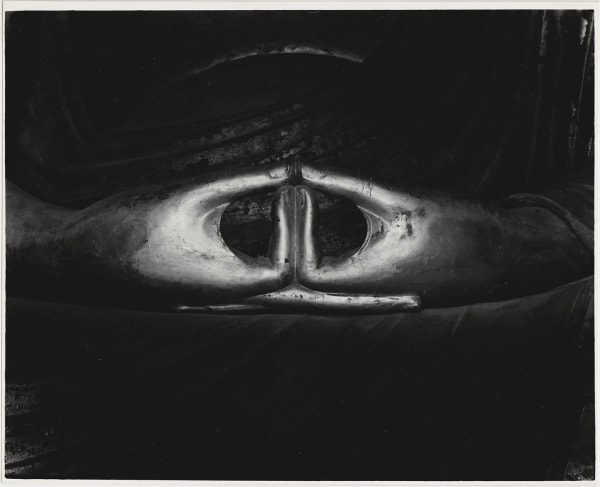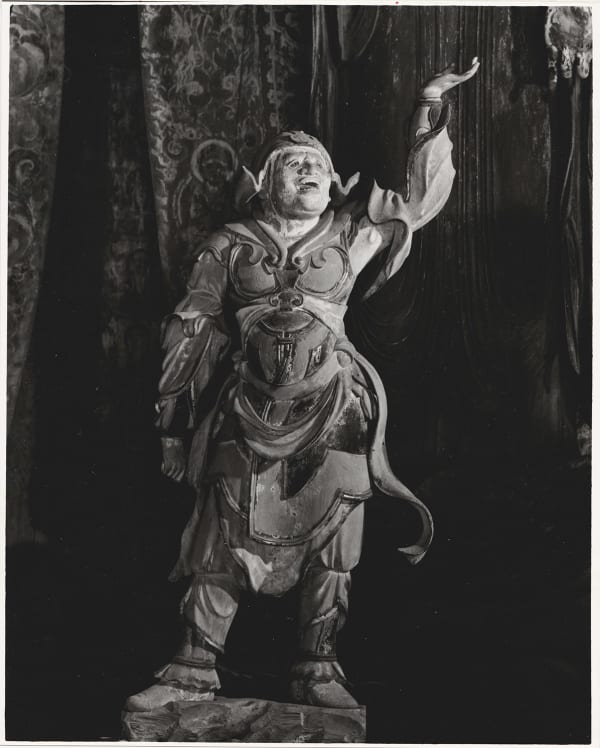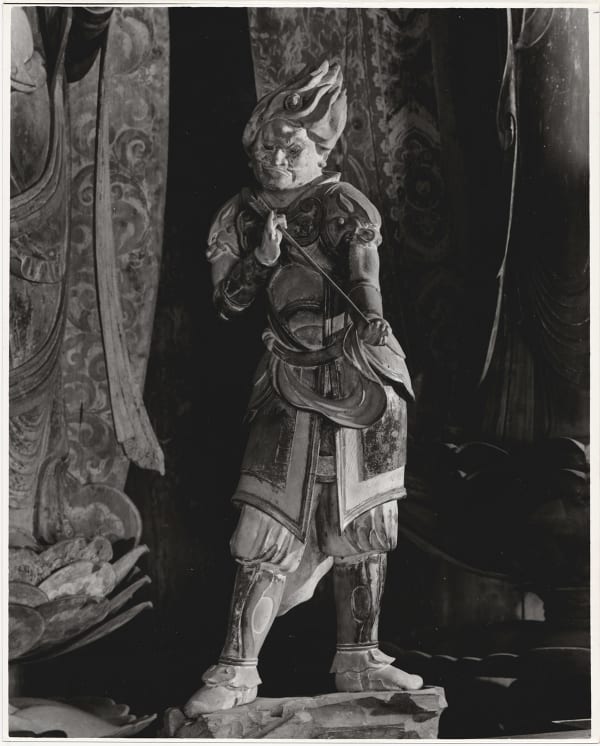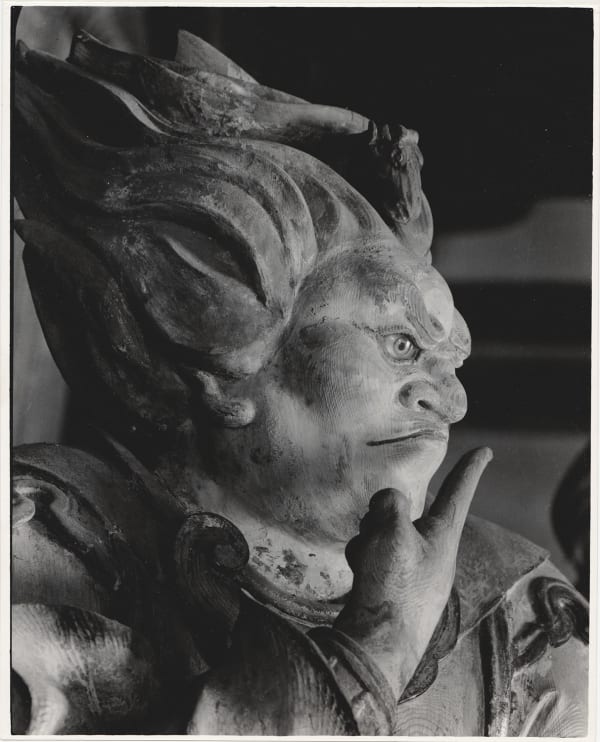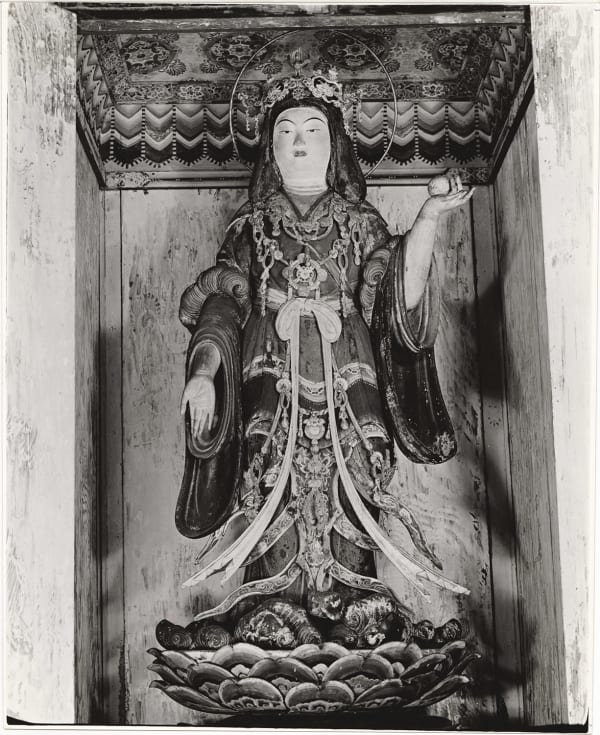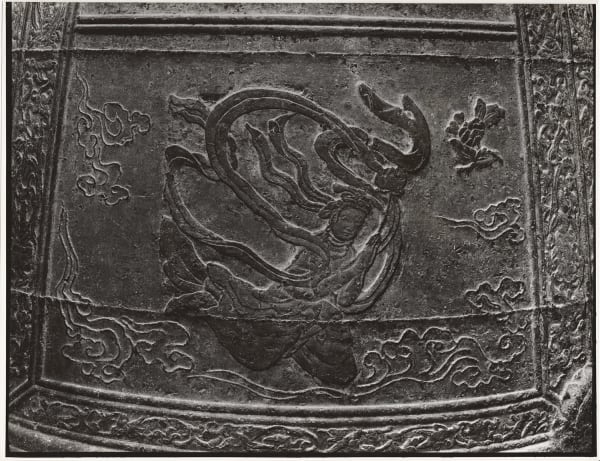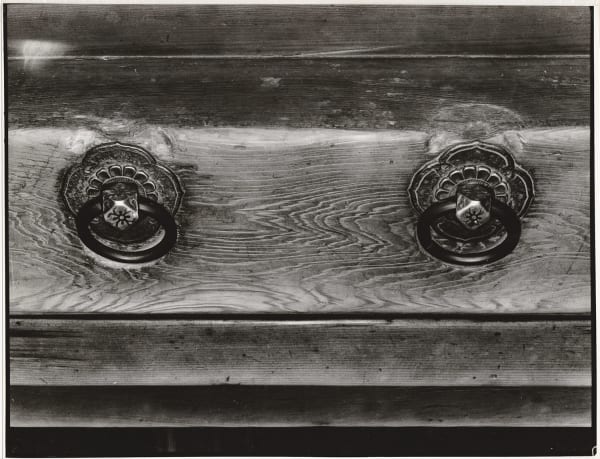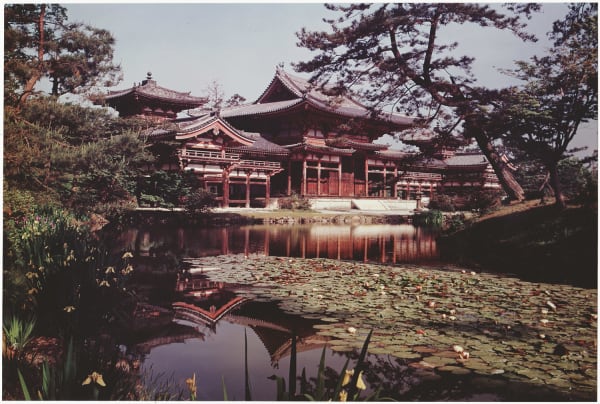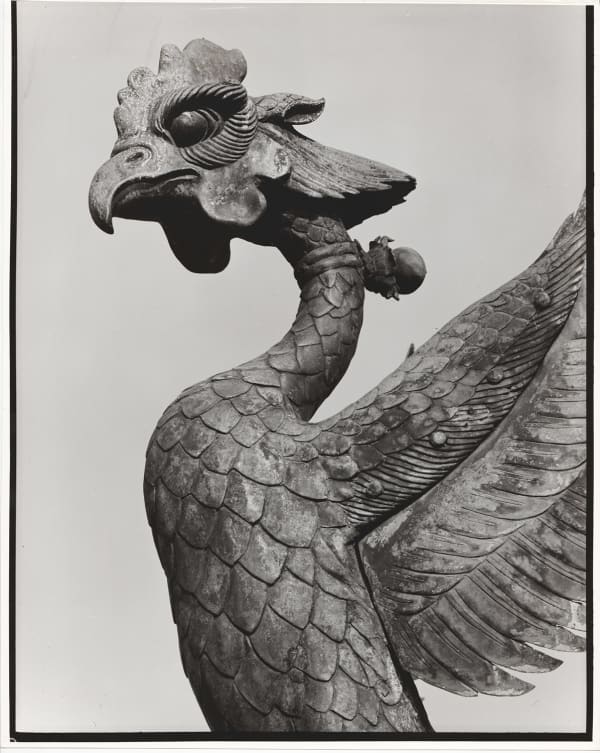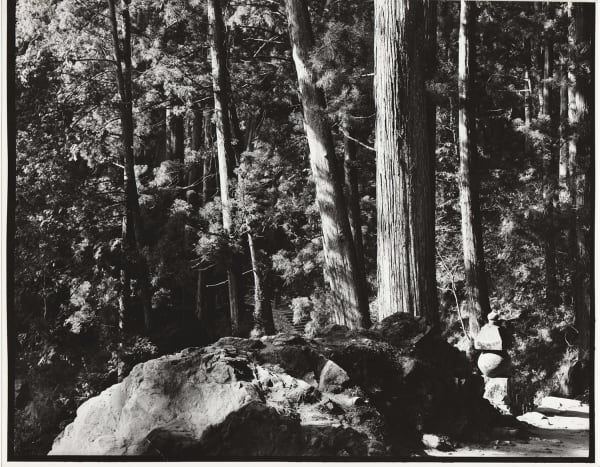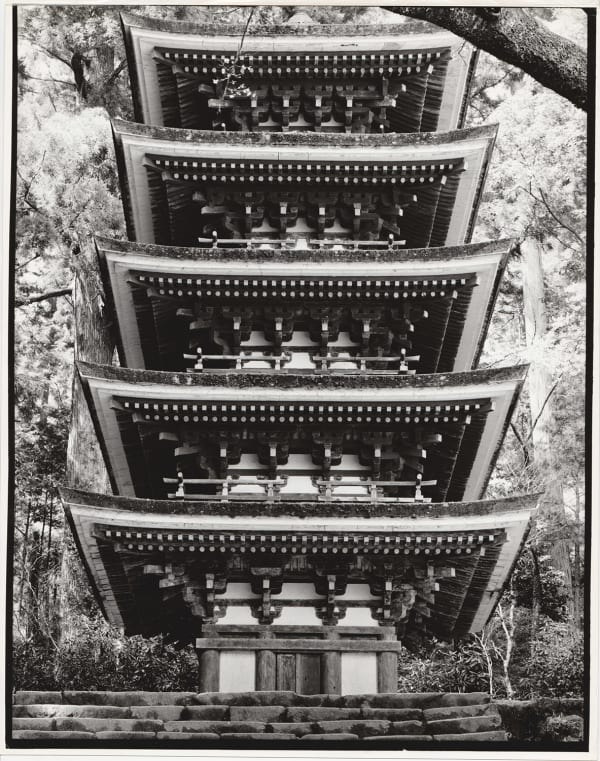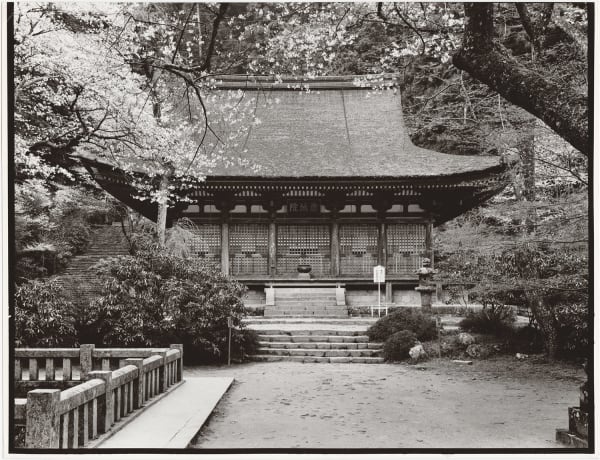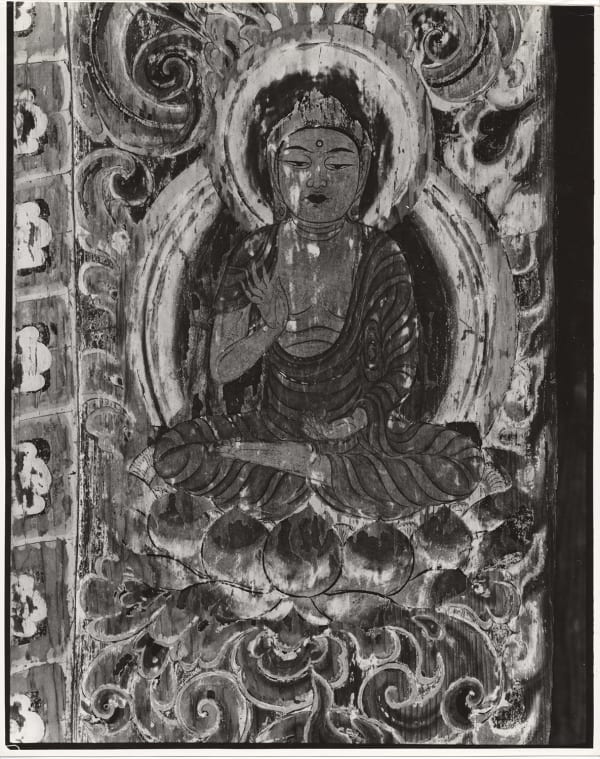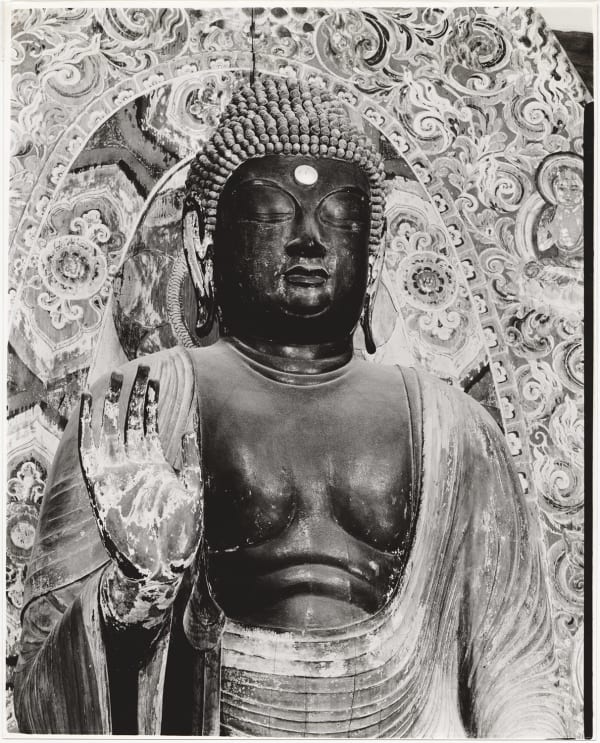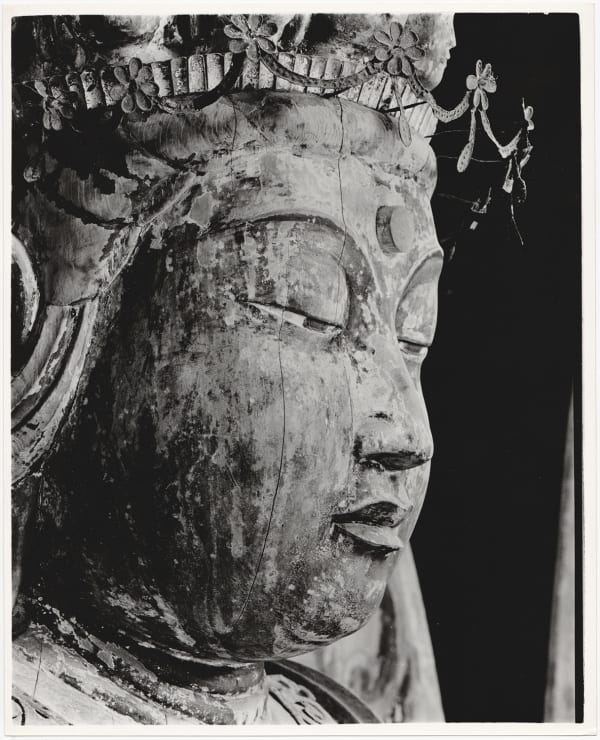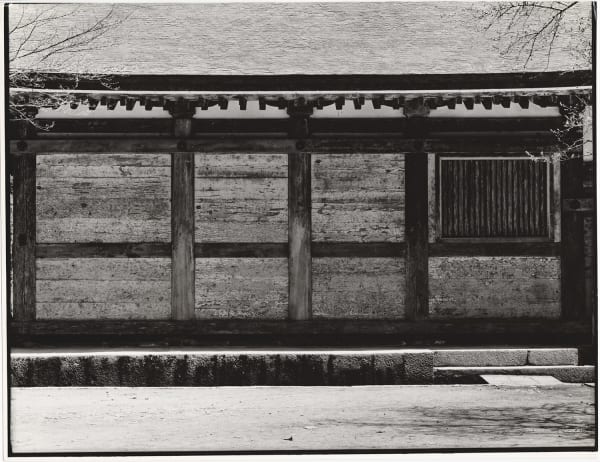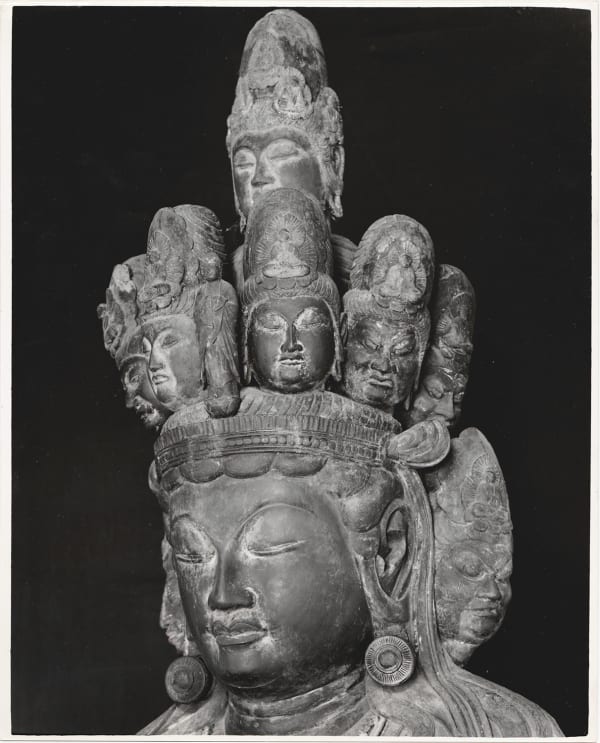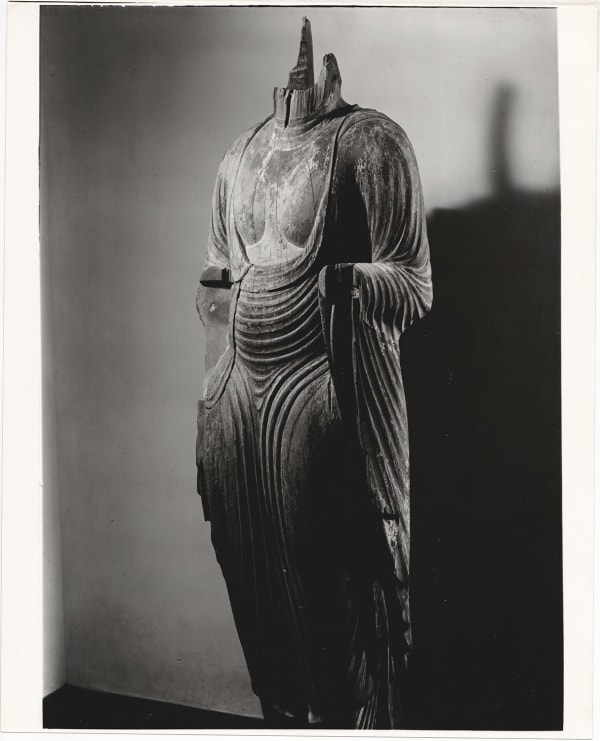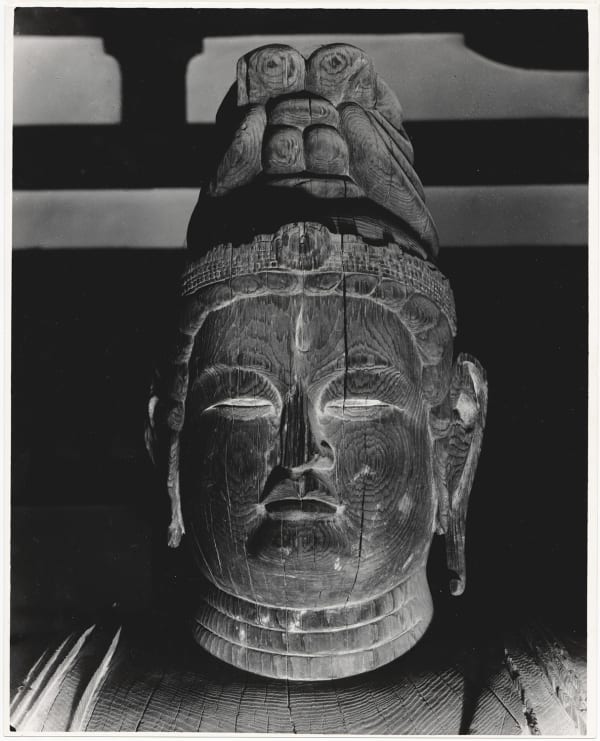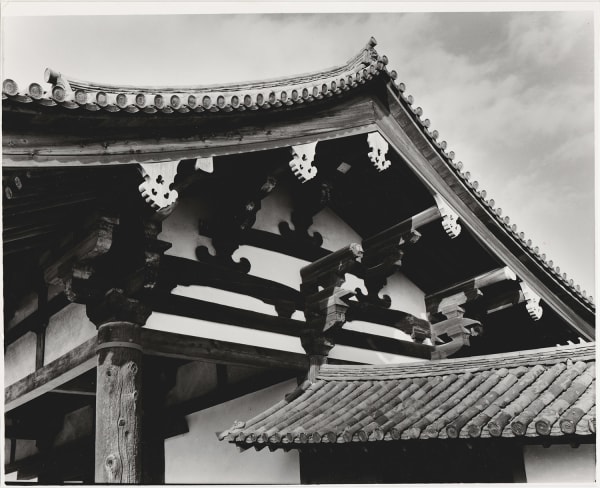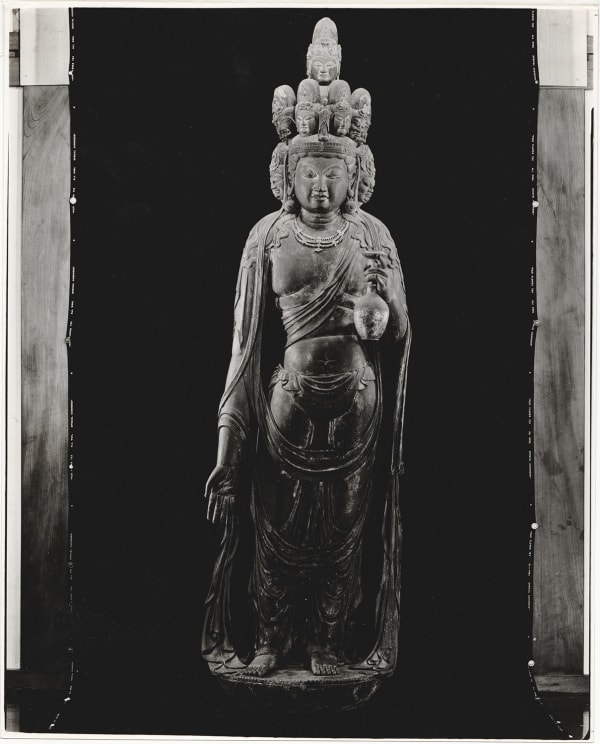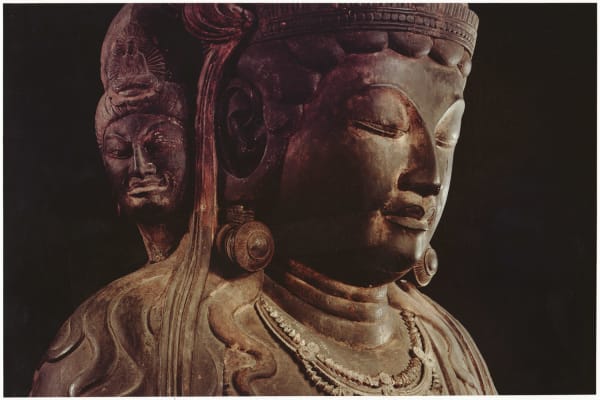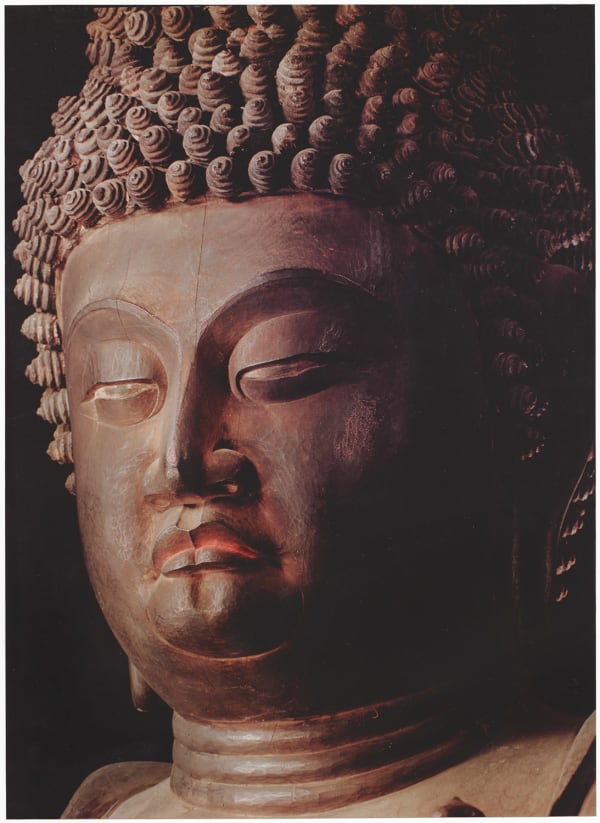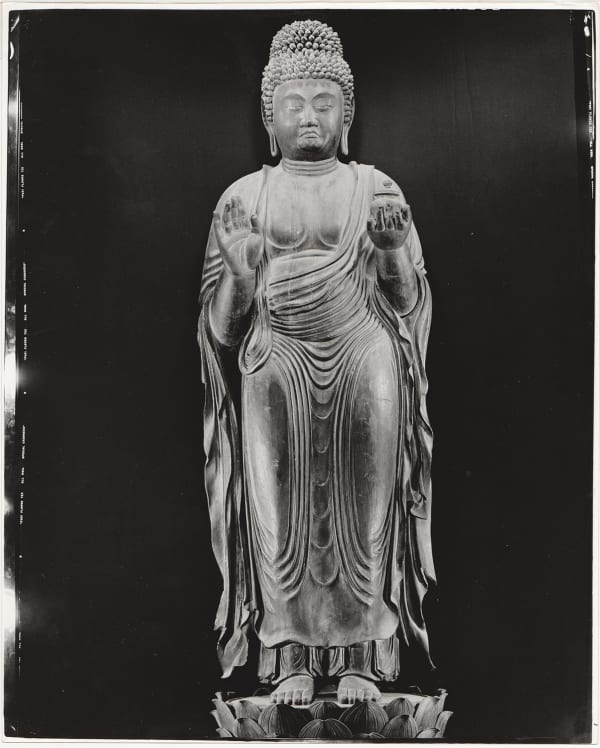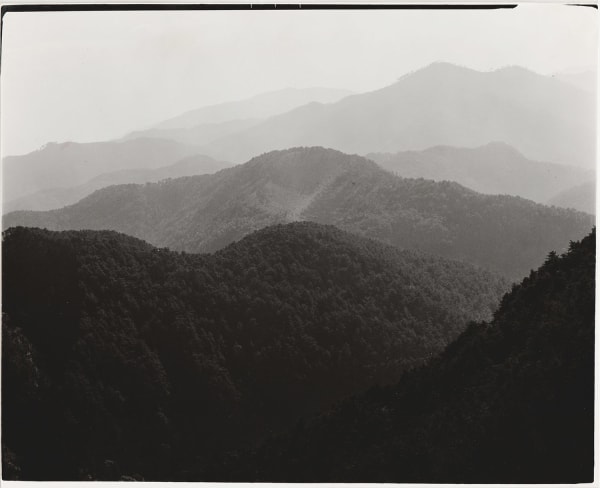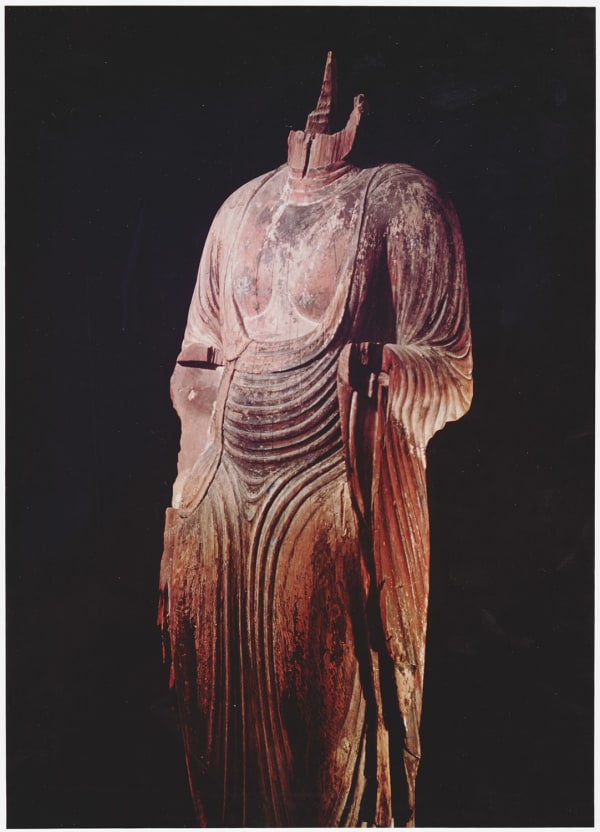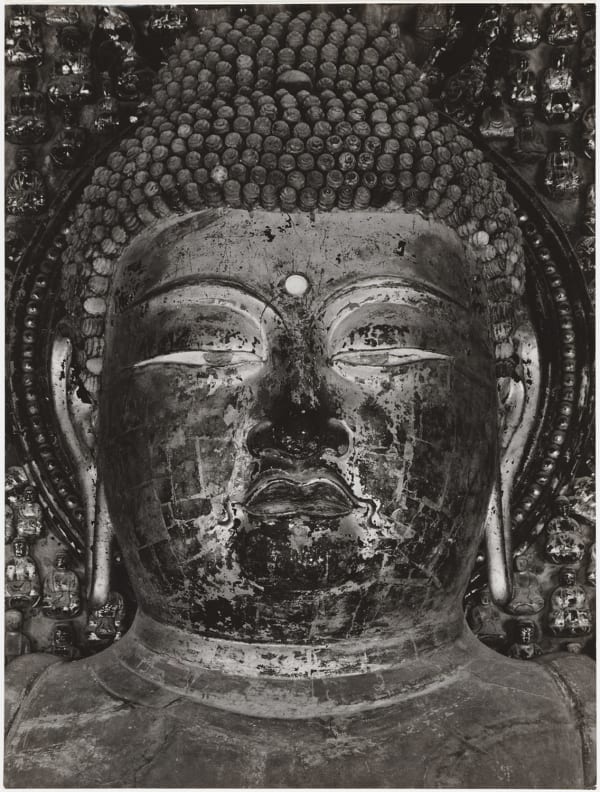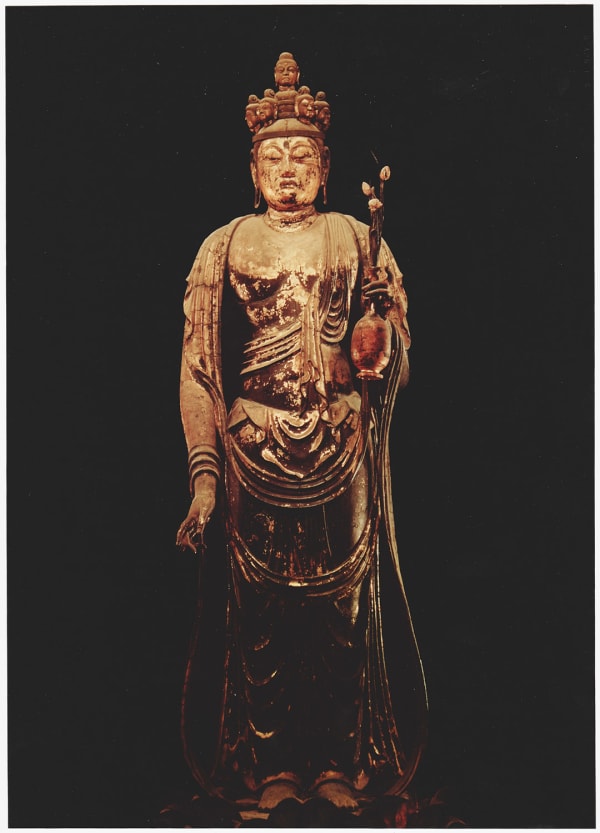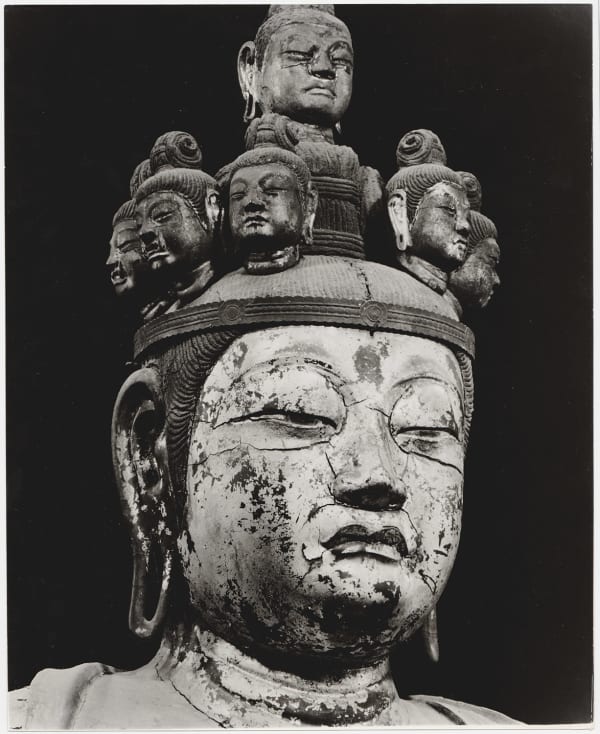Ken Domon
Ken Domon (25 October 1909 – 15 September 1990) was one of the most renowned Japanese photographers of the 20th century. He is most celebrated as a photojournalist, though he may have been most prolific as a photographer of Buddhist temples and statuary. Domon was born in Sakata, Yamagata Prefecture. He studied law at Nihon University, but was expelled from the school due to his participation in radical politics. He moved from painting to portrait photography, and obtained a position with Kotaro Miyauchi Photo Studio in 1933. In 1935 he joined Nippon Kōbō to work on its magazine Nippon. Four years later he moved to Kokusai Bunka Shinkōkai, a national propaganda organization; like Ihei Kimura and many other notable Japanese photographers, he helped the war effort.
In 1938, the reportage by Domon following the Minister for Foreign Affairs at that time, Kazushige Ugaki, was published in a Japanese magazine "Fujin Gaho" and in American "Life" magazine.
With the end of the war, Domon became independent and documented the aftermath of the war, focusing on society and the lives of ordinary people. He became known as a proponent of realism in photography, which he described as, 'an absolute snapshot that is absolutely not dramatic.' He was a prolific contributor to photographic magazines, revived or started afresh through the early 1950s. With Kimura, Hiroshi Hamaya and others, he rejected posed and other artful photographs; in his polemics in the photographic magazines, Domon was the most forceful exponent of this view. He famously defined his goal as 'the direct connection between camera and motif.'
Among Domon's most powerful images are those taken in the first decade or so after the war, particularly those of the survivors of the atomic bombing of Hiroshima, the life and particularly the children in a poor coal-mining community in Chikuhō, Kyūshū), and the improvised play of children in Kōtō, Tokyo.
In 1958 Domon was awarded the Mainichi Photography Award and the Photographer of the Year Award from the Japan Photo Critics Association. He was given the Award of Arts award from the Ministry of Education in 1959 and the Japan Journalist's Congress Award in 1960.
Domon suffered strokes in 1960 and 1968, which eventually prevented him from holding a camera and confined him to a wheelchair. This did not deter him from photography, and in documenting the traditional culture of Japan. He traveled energetically around the country, photographing its Buddhist temples in what would become an imposing series of luxuriously produced books. In 1963 he began work on the major work of his life, Koji junrei (1963–1975). Concerning his photographs of Japan's traditional culture, Domon wrote, 'I am involved with the social realities of today, at the same time that I am involved with the traditions and classical culture of Nara and Kyoto, and these two involvements are linked by their common search for the point in which they are related to the fate of the people, the anger, the sadness, the joys of the Japanese people.' Domon's method of photographing these temples was to stay at the location for a time before taking the first photo. He would then begin photographing based not on a systematic, scholarly approach to the subject, but based on how his feelings towards the subjects moved him to record them.
In 1976 Domon was completely incapacitated by a third stroke, and he died in Tokyo on 15 September 1990. In 1981 Mainichi Newspapers established the annual Domon Ken Award in celebration of the 110th birthday of the Mainichi Shimbun; two years later, the Domon Ken Photography Museum was opened in Sakata.
-
 Koji Junrai - Plate 115, 1963-1972
Koji Junrai - Plate 115, 1963-1972 -
 Koji Junrai - Plate 114, 1963-1972
Koji Junrai - Plate 114, 1963-1972 -
 Koji Junrai - Plate 113, 1963-1972
Koji Junrai - Plate 113, 1963-1972 -
 Koji Junrai - Plate 112, 1963-1972
Koji Junrai - Plate 112, 1963-1972 -
 Koji Junrai - Plate 111, 1963-1972
Koji Junrai - Plate 111, 1963-1972 -
 Koji Junrai - Plate 110, 1963-1972
Koji Junrai - Plate 110, 1963-1972 -
 Koji Junrai - Plate 109, 1963-1972
Koji Junrai - Plate 109, 1963-1972 -
 Koji Junrai - Plate 108, 1963-1972
Koji Junrai - Plate 108, 1963-1972 -
 Koji Junrai - Plate 107, 1963-1972
Koji Junrai - Plate 107, 1963-1972 -
 Koji Junrai - Plate 106, 1963-1972
Koji Junrai - Plate 106, 1963-1972 -
 Koji Junrai - Plate 105, 1963-1972
Koji Junrai - Plate 105, 1963-1972 -
 Koji Junrai - Plate 104, 1963-1972
Koji Junrai - Plate 104, 1963-1972 -
 Koji Junrai - Plate 103, 1963-1972
Koji Junrai - Plate 103, 1963-1972 -
 Koji Junrai - Plate 102, 1963-1972
Koji Junrai - Plate 102, 1963-1972 -
 Koji Junrai - Plate 101, 1963-1972
Koji Junrai - Plate 101, 1963-1972 -
 Koji Junrai - Plate 100, 1963-1972
Koji Junrai - Plate 100, 1963-1972 -
 Koji Junrai - Plate 099, 1963-1972
Koji Junrai - Plate 099, 1963-1972 -
 Koji Junrai - Plate 098, 1963-1972
Koji Junrai - Plate 098, 1963-1972 -
 Koji Junrai - Plate 097, 1963-1972
Koji Junrai - Plate 097, 1963-1972 -
 Koji Junrai - Plate 096, 1963-1972
Koji Junrai - Plate 096, 1963-1972 -
 Koji Junrai - Plate 095, 1963-1972
Koji Junrai - Plate 095, 1963-1972 -
 Koji Junrai - Plate 094, 1963-1972
Koji Junrai - Plate 094, 1963-1972 -
 Koji Junrai - Plate 093, 1963-1972
Koji Junrai - Plate 093, 1963-1972 -
 Koji Junrai - Plate 092, 1963-1972
Koji Junrai - Plate 092, 1963-1972 -
 Koji Junrai - Plate 091, 1963-1972
Koji Junrai - Plate 091, 1963-1972 -
 Koji Junrai - Plate 090, 1963-1972
Koji Junrai - Plate 090, 1963-1972 -
 Koji Junrai - Plate 089, 1963-1972
Koji Junrai - Plate 089, 1963-1972 -
 Koji Junrai - Plate 088, 1963-1972
Koji Junrai - Plate 088, 1963-1972 -
 Koji Junrai - Plate 087, 1963-1972
Koji Junrai - Plate 087, 1963-1972 -
 Koji Junrai - Plate 086, 1963-1972
Koji Junrai - Plate 086, 1963-1972 -
 Koji Junrai - Plate 085, 1963-1972
Koji Junrai - Plate 085, 1963-1972 -
 Koji Junrai - Plate 084, 1963-1972
Koji Junrai - Plate 084, 1963-1972 -
 Koji Junrai - Plate 083, 1963-1972
Koji Junrai - Plate 083, 1963-1972 -
 Koji Junrai - Plate 082, 1963-1972
Koji Junrai - Plate 082, 1963-1972 -
 Koji Junrai - Plate 081, 1963-1972
Koji Junrai - Plate 081, 1963-1972 -
 Koji Junrai - Plate 080, 1963-1972
Koji Junrai - Plate 080, 1963-1972 -
 Koji Junrai - Plate 079, 1963-1972
Koji Junrai - Plate 079, 1963-1972 -
 Koji Junrai - Plate 078, 1963-1972
Koji Junrai - Plate 078, 1963-1972 -
 Koji Junrai - Plate 077, 1963-1972
Koji Junrai - Plate 077, 1963-1972 -
 Koji Junrai - Plate 076, 1963-1972
Koji Junrai - Plate 076, 1963-1972 -
 Koji Junrai - Plate 075, 1963-1972
Koji Junrai - Plate 075, 1963-1972 -
 Koji Junrai - Plate 074, 1963-1972
Koji Junrai - Plate 074, 1963-1972 -
 Koji Junrai - Plate 073, 1963-1972
Koji Junrai - Plate 073, 1963-1972 -
 Koji Junrai - Plate 072, 1963-1972
Koji Junrai - Plate 072, 1963-1972 -
 Koji Junrai - Plate 071, 1963-1972
Koji Junrai - Plate 071, 1963-1972 -
 Koji Junrai - Plate 070, 1963-1972
Koji Junrai - Plate 070, 1963-1972 -
 Koji Junrai - Plate 069, 1963-1972
Koji Junrai - Plate 069, 1963-1972 -
 Koji Junrai - Plate 068, 1963-1972
Koji Junrai - Plate 068, 1963-1972 -
 Koji Junrai - Plate 067, 1963-1972
Koji Junrai - Plate 067, 1963-1972 -
 Koji Junrai - Plate 066, 1963-1972
Koji Junrai - Plate 066, 1963-1972 -
 Koji Junrai - Plate 065, 1963-1972
Koji Junrai - Plate 065, 1963-1972 -
 Koji Junrai - Plate 064, 1963-1972
Koji Junrai - Plate 064, 1963-1972 -
 Koji Junrai - Plate 063, 1963-1972
Koji Junrai - Plate 063, 1963-1972 -
 Koji Junrai - Plate 062, 1963-1972
Koji Junrai - Plate 062, 1963-1972 -
 Koji Junrai - Plate 061, 1963-1972
Koji Junrai - Plate 061, 1963-1972 -
 Koji Junrai - Plate 060, 1963-1972
Koji Junrai - Plate 060, 1963-1972 -
 Koji Junrai - Plate 059, 1963-1972
Koji Junrai - Plate 059, 1963-1972 -
 Koji Junrai - Plate 058, 1963-1972
Koji Junrai - Plate 058, 1963-1972 -
 Koji Junrai - Plate 057, 1963-1972
Koji Junrai - Plate 057, 1963-1972 -
 Koji Junrai - Plate 056, 1963-1972
Koji Junrai - Plate 056, 1963-1972 -
 Koji Junrai - Plate 055, 1963-1972
Koji Junrai - Plate 055, 1963-1972 -
 Koji Junrai - Plate 054, 1963-1972
Koji Junrai - Plate 054, 1963-1972 -
 Koji Junrai - Plate 053, 1963-1972
Koji Junrai - Plate 053, 1963-1972 -
 Koji Junrai - Plate 052, 1963-1972
Koji Junrai - Plate 052, 1963-1972 -
 Koji Junrai - Plate 051, 1963-1972
Koji Junrai - Plate 051, 1963-1972 -
 Koji Junrai - Plate 050, 1963-1972
Koji Junrai - Plate 050, 1963-1972 -
 Koji Junrai - Plate 049, 1963-1972
Koji Junrai - Plate 049, 1963-1972 -
 Koji Junrai - Plate 048, 1963-1972
Koji Junrai - Plate 048, 1963-1972 -
 Koji Junrai - Plate 047, 1963-1972
Koji Junrai - Plate 047, 1963-1972 -
 Koji Junrai - Plate 046, 1963-1972
Koji Junrai - Plate 046, 1963-1972 -
 Koji Junrai - Plate 045, 1963-1972
Koji Junrai - Plate 045, 1963-1972 -
 Koji Junrai - Plate 044, 1963-1972
Koji Junrai - Plate 044, 1963-1972 -
 Koji Junrai - Plate 043, 1963-1972
Koji Junrai - Plate 043, 1963-1972 -
 Koji Junrai - Plate 042, 1963-1972
Koji Junrai - Plate 042, 1963-1972 -
 Koji Junrai - Plate 041, 1963-1972
Koji Junrai - Plate 041, 1963-1972 -
 Koji Junrai - Plate 040, 1963-1972
Koji Junrai - Plate 040, 1963-1972 -
 Koji Junrai - Plate 039, 1963-1972
Koji Junrai - Plate 039, 1963-1972 -
 Koji Junrai - Plate 038, 1963-1972
Koji Junrai - Plate 038, 1963-1972 -
 Koji Junrai - Plate 037, 1963-1972
Koji Junrai - Plate 037, 1963-1972 -
 Koji Junrai - Plate 036, 1963-1972
Koji Junrai - Plate 036, 1963-1972 -
 Koji Junrai - Plate 035, 1963-1972
Koji Junrai - Plate 035, 1963-1972 -
 Koji Junrai - Plate 034, 1963-1972
Koji Junrai - Plate 034, 1963-1972 -
 Koji Junrai - Plate 033, 1963-1972
Koji Junrai - Plate 033, 1963-1972 -
 Koji Junrai - Plate 032, 1963-1972
Koji Junrai - Plate 032, 1963-1972 -
 Koji Junrai - Plate 031, 1963-1972
Koji Junrai - Plate 031, 1963-1972 -
 Koji Junrai - Plate 030, 1963-1972
Koji Junrai - Plate 030, 1963-1972 -
 Koji Junrai - Plate 029, 1963-1972
Koji Junrai - Plate 029, 1963-1972 -
 Koji Junrai - Plate 028, 1963-1972
Koji Junrai - Plate 028, 1963-1972 -
 Koji Junrai - Plate 027, 1963-1972
Koji Junrai - Plate 027, 1963-1972 -
 Koji Junrai - Plate 026, 1963-1972
Koji Junrai - Plate 026, 1963-1972 -
 Koji Junrai - Plate 025, 1963-1972
Koji Junrai - Plate 025, 1963-1972 -
 Koji Junrai - Plate 024, 1963-1972
Koji Junrai - Plate 024, 1963-1972 -
 Koji Junrai - Plate 023, 1963-1972
Koji Junrai - Plate 023, 1963-1972 -
 Koji Junrai - Plate 022, 1963-1972
Koji Junrai - Plate 022, 1963-1972 -
 Koji Junrai - Plate 021, 1963-1972
Koji Junrai - Plate 021, 1963-1972 -
 Koji Junrai - Plate 020, 1963-1972
Koji Junrai - Plate 020, 1963-1972 -
 Koji Junrai - Plate 019, 1963-1972
Koji Junrai - Plate 019, 1963-1972 -
 Koji Junrai - Plate 018, 1963-1972
Koji Junrai - Plate 018, 1963-1972 -
 Koji Junrai - Plate 017, 1963-1972
Koji Junrai - Plate 017, 1963-1972 -
 Koji Junrai - Plate 016, 1963-1972
Koji Junrai - Plate 016, 1963-1972 -
 Koji Junrai - Plate 015, 1963-1972
Koji Junrai - Plate 015, 1963-1972 -
 Koji Junrai - Plate 014, 1963-1972
Koji Junrai - Plate 014, 1963-1972 -
 Koji Junrai - Plate 013, 1963-1972
Koji Junrai - Plate 013, 1963-1972 -
 Koji Junrai - Plate 012, 1963-1972
Koji Junrai - Plate 012, 1963-1972 -
 Koji Junrai - Plate 011, 1963-1972
Koji Junrai - Plate 011, 1963-1972 -
 Koji Junrai - Plate 010, 1963-1972
Koji Junrai - Plate 010, 1963-1972 -
 Koji Junrai - Plate 009, 1963-1972
Koji Junrai - Plate 009, 1963-1972 -
 Koji Junrai - Plate 008, 1963-1972
Koji Junrai - Plate 008, 1963-1972 -
 Koji Junrai - Plate 007, 1963-1972
Koji Junrai - Plate 007, 1963-1972 -
 Koji Junrai - Plate 006, 1963-1972
Koji Junrai - Plate 006, 1963-1972 -
 Koji Junrai - Plate 005, 1963-1972
Koji Junrai - Plate 005, 1963-1972 -
 Koji Junrai - Plate 004, 1963-1972
Koji Junrai - Plate 004, 1963-1972 -
 Koji Junrai - Plate 003, 1963-1972
Koji Junrai - Plate 003, 1963-1972 -
 Koji Junrai - Plate 002, 1963-1972
Koji Junrai - Plate 002, 1963-1972 -
 Koji Junrai - Plate 001, 1963-1972
Koji Junrai - Plate 001, 1963-1972
-

Hiroshima - Ken Domon
Ken Domon, 1958hardcover with original dust jacket in slipcase, in cardboard box, 188 pagesRead more
Publisher: Kenko-Sha
Dimensions: 347 x 255 mm -

New Japanese photography
Various artists, 1974softcover, 120 pagesRead more
Publisher: The Museum of Modern Art
Dimensions: 253 x 230 mm -
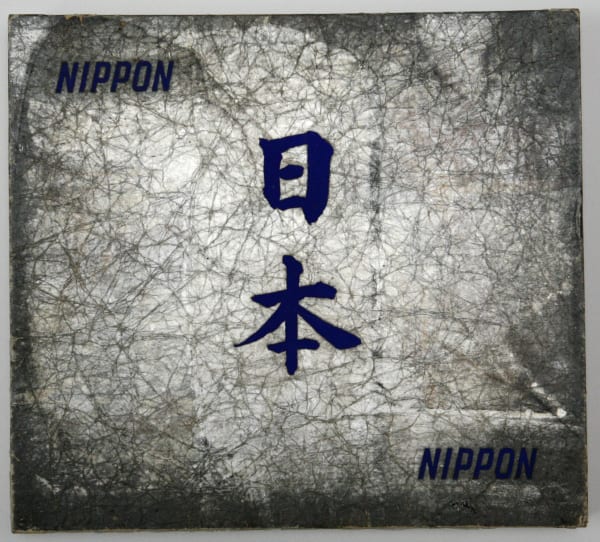
Nippon - various photographers
Japan: The Nation in Motion Ken Domon, Masao Horino, Ihei Kimura, a.o., 1938stiff paper boards, leporello, unpaginated, photographs in sheet-fed gravure pagesRead more
Publisher: Kokusai Bunka Shinkokai
Dimensions: 277 x 307 mm
